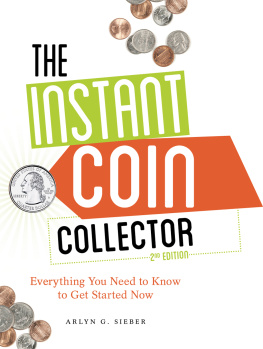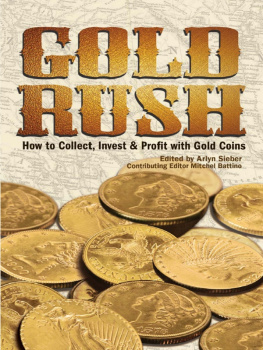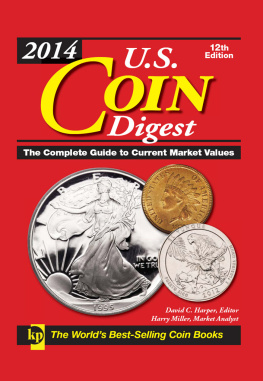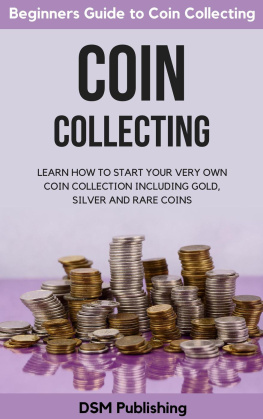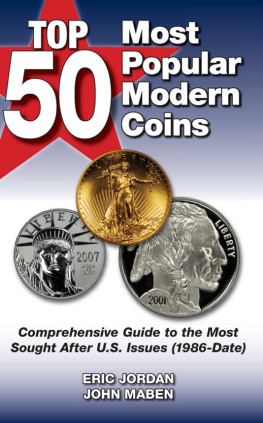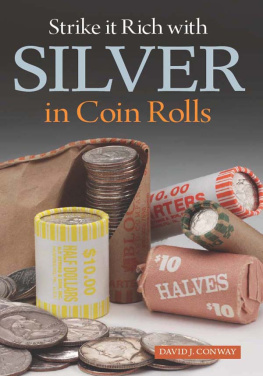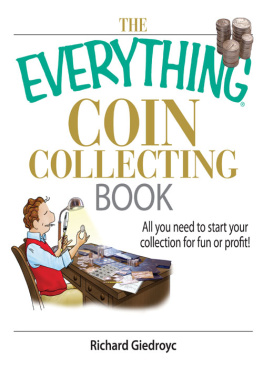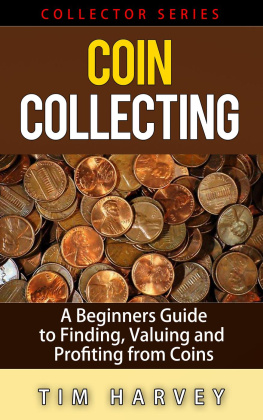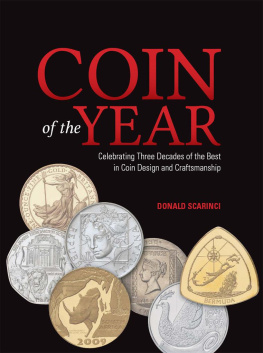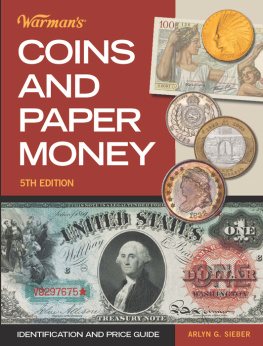THE INSTANT COIN COLLECTOR
2ND EDITION
Everything You Need to Know
to Get Started Now
ARLYN G. SIEBER
PART 1
GETTING A HANDLE ON COINS
Basic tips for starting out right
INTRODUCTION
WELCOME TO COIN COLLECTING

A GOLD STATER OF KING CROESUS OF LYDIA
The kingdom of Lydia, which was located in part of modern-day Turkey, is credited with producing the worlds first coins in 700-650 B.C. Some speculate that the worlds first coin collector came shortly thereafter.
Coin collecting has provided an enjoyable, educational, and sometimes profitable pastime for generations. The hobby welcomes those of all ages, physical abilities, and financial means. All it requires is an interest in the subject, enjoyment in pursuing a collecting goal, and satisfaction in the completion of that goal. The reward is the pride a collector feels when he or she pulls a coin album off their bookshelf and views a complete collection of a particular coin type or series, or even the progress made toward completing a collection.
Printed references to coin collecting date back as far as the 15th century. In 1796, the hobby generated the first widely circulated book on numismatics: The Virtuosos Companion and Coin Collectors Guide, published in England. Coinage was scarce in Colonial America, so there were few coins to collect and even fewer with the financial wherewithal to put coins aside and not spend them.

1792 HALF DISME
Congress passed an act establishing the U.S. Mint on April 2, 1792. The decimal coinage system it authorized was based largely on a plan put forth by Thomas Jefferson. The following July, it produced 1,500 silver half dismes, or 5-cent pieces, which are regarded as the nations first official coinage.
U.S. coinage began in earnest in 1793 with the production of more than 35,000 copper half cents and more than 36,000 copper one-cent coins. By 1796, in addition to half cents and cents, the Mint was producing silver half dimes, dimes, quarters, half dollars, and dollars, and gold $2.50, $5, and $10 coins. By the mid-1800s, the Mint was producing about 17 million coins annually in 12 denominations.

1793 HALF CENT
The increased production meant more coins to collect, and there were more people who could afford to collect them. A few magazines devoted to coin collecting began to appear in the middle of the century. So did dealers who bought and sold collectible coins for a living or as a supplement to their day jobs. The magazines contained advertisements for collectible coins and oftentimes were produced as house organs and marketing tools by the dealers themselves.

1793 ONE CENT
Many collectors of the time also courted relationships with banks, bullion exchange houses, or other volume handlers of coins as sources for their collections. Those who lived near Philadelphia cultivated relationships with officials and employees of the U.S. Mints production facility located there and thus obtained coins directly from the mint.

1848 ONE CENT
Interest in coin collecting in the United States surged in the late 1850s when the smaller, copper-nickel Flying Eagle cent replaced the old large copper one-cent coin. Just two years later, the Indian Head cent replaced the Flying Eagle cent. The general public started putting aside the obsolete coins, and demand and prices for them rose. Professional coin dealers emerged to meet the demand, and by the 1870s, most major Eastern cities had coin clubs.

1858 ONE CENT
The next major development in coin collecting occurred in 1888 when Dr. George Heath of Monroe, Michigan a physician by trade who moonlighted as a mail-order coin dealer published the first issue of The American Numismatist. Like many other publications of the time, the magazine was a marketing tool for Heaths coin business. In his new magazine, the country doctor estimated the number of U.S. coin collectors at 20,000.
By 1891, Heath had shortened the serials title to The Numismatist, and its readership formed the basis for the founding of the American Numismatic Association. The ANA continues today as the nations largest organization for coin collectors, and The Numismatist continues as its official monthly journal.
Coin collecting continued to grow in the early 20th century as exciting new designs made old coins obsolete. Ironically, the Great Depression brought another major development in coin collecting that defined the hobby for years to come and still impacts it today.
NUMISMATICS (NEW-MISS-MAT-IKS)
The study or collection of coins, tokens, and paper money.
In 1934, the Whitman Publishing Company of Racine, Wisconsin, introduced the penny board. It was essentially a big piece of cardboard with holes in it for each date and mint mark of Lincoln cents, starting in 1909. The boards sold for 25 cents each and were widely available in hardware stores, dime stores, shoeshine parlors, and gasoline stations.

WHITMAN PENNY BOARD
The boards provided cheap entertainment during the economic struggles of the 1930s as people of all ages checked the one-cent coins in their pocket change for dates and mint marks that would fill an empty hole in the board. In 1940, the board was reconfigured into a blue folder. The blue Whitman folders and similar products from other companies, such as the Warmans line of coin folders, continue today to provide direction in collecting a particular series and a storage and display medium for collectors.
U.S. MINT
The official United States Mint (www.usmint.gov) is a branch of the Treasury Department charged with producing the nations coinage. Its director is appointed by the president.
Private businesses that sometimes concoct official-sounding names that include the words mint or Washington or other terms sometimes associated with the federal government should not be confused with the official U.S. government mint.
The U.S. Mints main production facility is located in Philadelphia. Production facilities in Denver, San Francisco, and West Point, New York, are known as branch mints.
The U.S. Mint is also in charge of the nations $100 billion gold and silver reserves. This includes the gold reserves held at the Fort Knox Bullion Depository in Kentucky.
Coin collecting enjoyed a boom period in the 1950s. War veterans and others had disposable income to devote to a hobby and could find coins of the late 1800s and early 1900s in circulation. What they couldnt find, they could buy from the growing number of dealers who operated shops, set up at coin shows, or advertised in coin publications such as the newly founded

